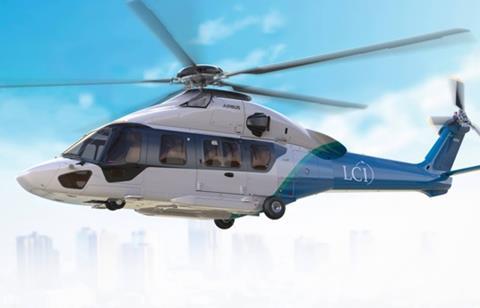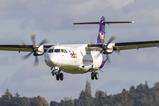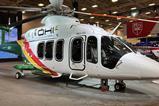Airbus Helicopters is convinced that the positive momentum seen for the H175 super-medium twin in 2022 will develop into a fully fledged resurgence over the coming months.
Last year the airframer booked orders for eight units, the majority for offshore transportation customers. While not quite in double figures it still represents an improvement on two years ago when zero orders were taken.
“This helicopter is really illustrating the positive momentum we see in the oil and gas market,” says Bruno Even, Airbus Helicopters chief executive.

Higher oil prices in 2022 were “a positive sign” which “should be confirmed in 2023”, he said during a briefing at Heli-Expo in Atlanta earlier this week.
“H175 is the first helicopter really to benefit from that situation, to benefit from the evolution of the market and at the same time, the need we see on the market for the renewal of some existing helicopters,” he says.
Crucially, there may already be signs of the market responding. At the show, Airbus Helicopters unveiled a tentative agreement with French finance firm Rive Private Investment for up to eight H175s for offshore or search and rescue missions. If confirmed these would be delivered between 2024 and 2026.
Lessor LCI, meanwhile, has an order for two H175s which are due for delivery later this. Jaspal Jandu, LCI chief executive, says it is “seeing lots of interest” from operators in taking that pair.
LCI additionally holds four options for the type for 2024 delivery “and we are talking with both the manufacturer and the operators about those”.
Analyst Steve Robertson from boutique consultancy Air and Sea Analytics believes the 7.8t platform is “now reaching critical mass” as the installed base increases.
Robertson calculates the effective utilisation rate – the total fleet less known stored or uncontracted aircraft – of offshore-configured H175s to be 100%, ahead of the Leonardo Helicopters AW189 super-medium (98%) and Sikorsky S-92 heavy-twin (93%).

What may further propel sales of the H175 and other super-medium types is the coming requirement to replace older S-92s.
Manufacturers argue that the super-mediums are more efficient and cheaper to operate that the S-92 for a large proportion of offshore transport missions, a view shared by Jandu.
“The S-92 market is tight right now but looking five to 10 years into the future you are probably going to be looking at super-mediums; we will see more super-mediums in future rather than less,” he says.
Even sees the growing market interest as “confirming that the H175 is reaching maturity at the right time”.
“We see a need for new helicopters, we see flight hours increasing on the oil and gas market, and we see the [dissipation of the] overcapacity which was in the market over the past years.
“All the conditions and ingredients are here for investing in new helicopters.”
In preparation for the anticpated higher demand, Airbus Helicopters has already begun readying its final assembly line to raise annual output to 15-20 aircraft annually within the coming years.































